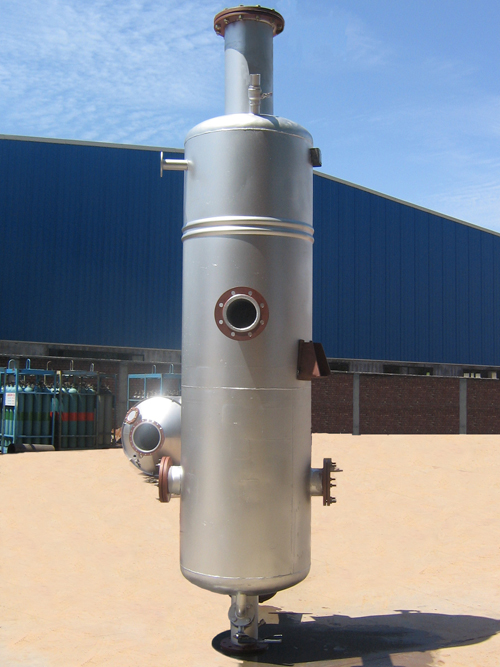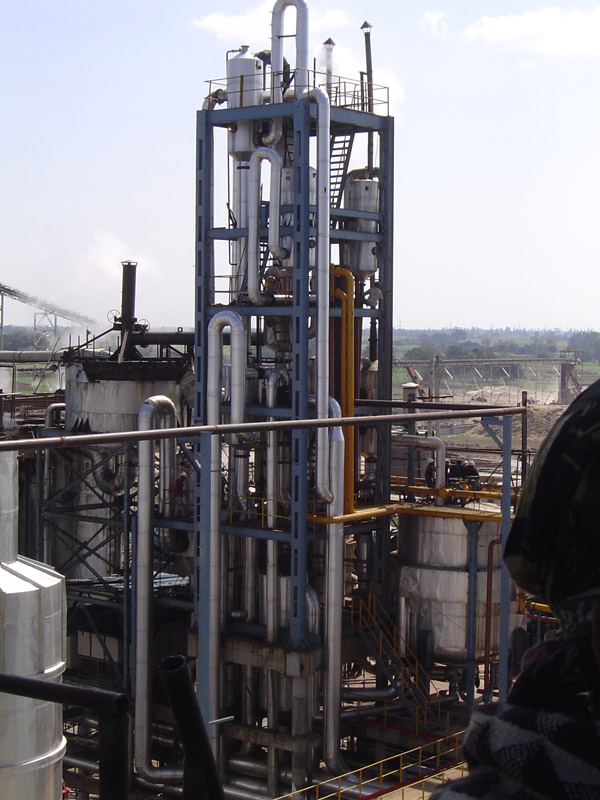Direct Contact Heaters
Direct Contact (DC) Heaters are an alternative to plate and tubular surface heaters. DC heaters have high heat transfer coefficient (HTC) due to absence of resistances like liquid film resistance, condensing vapor resistance, resistance of scale and tube / plate material resistance. These operate at an approach of around 1°C in contrast to shell & tube / plate type exchangers which normally operate at an approach of around 5–7°C.


SED Designed Direct Contact Counter-Current Heaters
Distinctive Features:
Design features:
- Light-weight stainless steel structure with corrugated shell and rib supported deflectors.
- High turndown ratio (operational between 30% - 100% of designed flow without compromising its efficiency).
- Effective NCG removal due to compact sizing.
- Inbuilt entrainment separator.
- 0-1°C approach temperature.
- Designed for pressure as well as sub-atmospheric vapour conditions.
Automated control:
- Efficient measurement of temperature, pressure and level.
- Alarming for critical parameters (level and body pressure).
Trouble free operation:
- No flooding.
- Precise level control ensures no backflow in case of sudden fluctuation.
- No cleaning or maintenance required.
Power economy:
- Low head pumps are required due to negligible pressure loss.
Steam economy:
- Utilizes heat content of NCG (otherwise going waste).
- Utilization of low grade vapors improve steam economy of the plant.
Application Notes:
SED has successfully implemented DC heaters in Sugar Industry in the following application areas:
- Raw, sulphited & defecated juice heating.
- Clear juice heating.
- Syrup heating.
- Molasses Conditioning.
- Water heating.
- Melt heating.
- Filtrate juice heating.
With the following special advantages / benefits:
- Effective removal of dissolved gases from juice.
- De-aerated and slightly diluted juices can be clarified far more effectively in clarifiers.
- Significant reduction in pumping head requirements.
- Operation on low pressure vapours with steam saving of upto 5%.
- Less space requirement.
- Do not require standby units and or cleaning/maintenance during the season.



